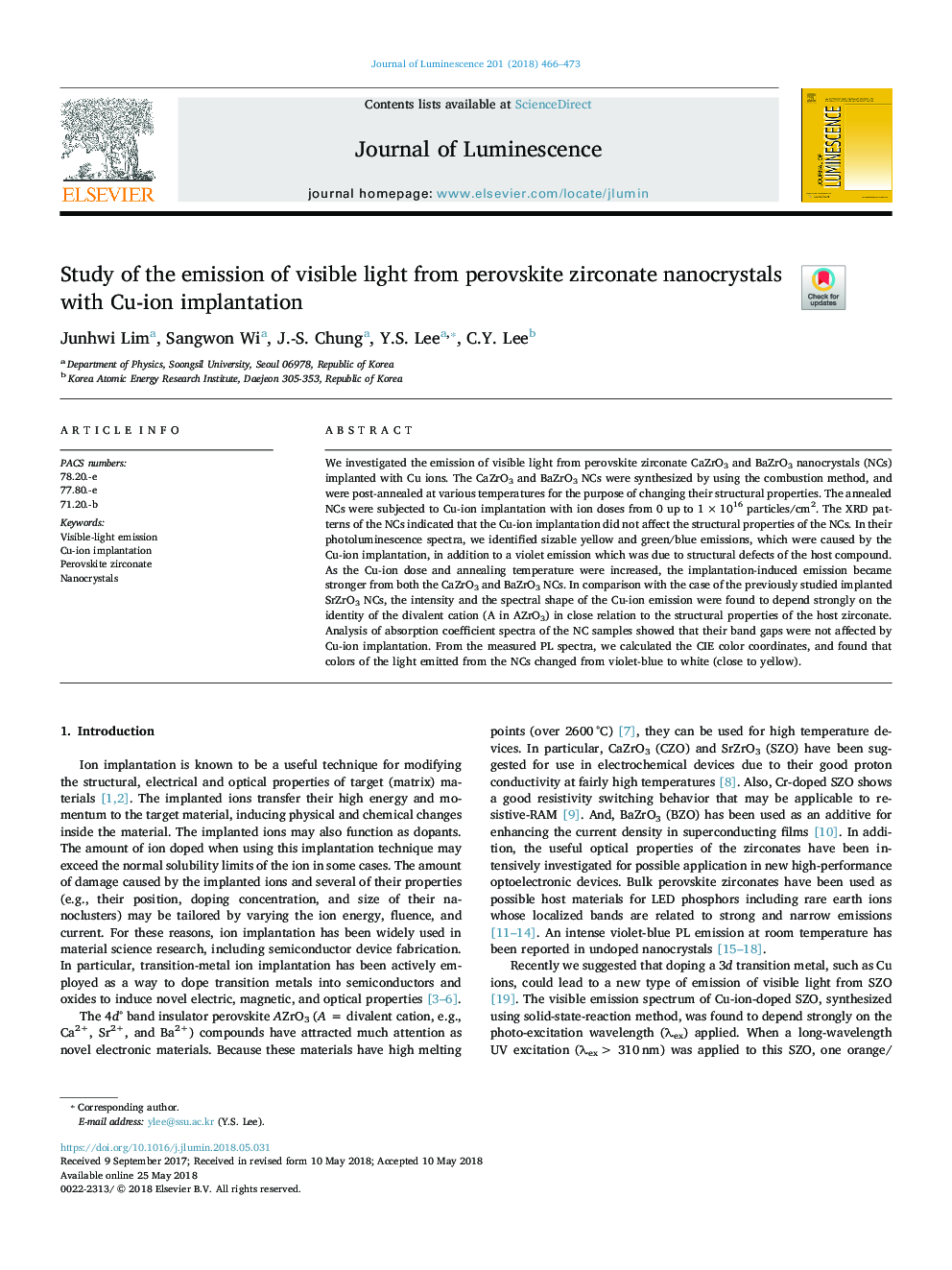| Article ID | Journal | Published Year | Pages | File Type |
|---|---|---|---|---|
| 7840053 | Journal of Luminescence | 2018 | 8 Pages |
Abstract
We investigated the emission of visible light from perovskite zirconate CaZrO3 and BaZrO3 nanocrystals (NCs) implanted with Cu ions. The CaZrO3 and BaZrO3 NCs were synthesized by using the combustion method, and were post-annealed at various temperatures for the purpose of changing their structural properties. The annealed NCs were subjected to Cu-ion implantation with ion doses from 0 up to 1â¯Ãâ¯1016 particles/cm2. The XRD patterns of the NCs indicated that the Cu-ion implantation did not affect the structural properties of the NCs. In their photoluminescence spectra, we identified sizable yellow and green/blue emissions, which were caused by the Cu-ion implantation, in addition to a violet emission which was due to structural defects of the host compound. As the Cu-ion dose and annealing temperature were increased, the implantation-induced emission became stronger from both the CaZrO3 and BaZrO3 NCs. In comparison with the case of the previously studied implanted SrZrO3 NCs, the intensity and the spectral shape of the Cu-ion emission were found to depend strongly on the identity of the divalent cation (A in AZrO3) in close relation to the structural properties of the host zirconate. Analysis of absorption coefficient spectra of the NC samples showed that their band gaps were not affected by Cu-ion implantation. From the measured PL spectra, we calculated the CIE color coordinates, and found that colors of the light emitted from the NCs changed from violet-blue to white (close to yellow).
Keywords
Related Topics
Physical Sciences and Engineering
Chemistry
Physical and Theoretical Chemistry
Authors
Junhwi Lim, Sangwon Wi, J.-S. Chung, Y.S. Lee, C.Y. Lee,
